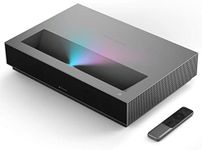Buying Guide for the Best Powerpoint Projectors
Choosing the right PowerPoint projector can significantly enhance your presentations, making them more engaging and effective. When selecting a projector, it's important to consider several key specifications that will determine the quality and suitability of the device for your specific needs. Understanding these specs will help you make an informed decision and ensure that your presentations are clear, vibrant, and professional.Brightness (Lumens)Brightness, measured in lumens, indicates how much light the projector can produce. This is crucial because it affects how well the image will be visible in different lighting conditions. For small, dark rooms, a projector with 1,000 to 2,000 lumens may suffice. For larger rooms or spaces with more ambient light, you might need 3,000 lumens or more. Consider where you'll be using the projector most often to determine the right brightness level for you.
ResolutionResolution refers to the number of pixels that make up the image on the screen, with higher resolutions providing clearer and more detailed images. Common resolutions include SVGA (800x600), XGA (1024x768), and HD (1920x1080). For basic PowerPoint presentations, XGA might be adequate, but for more detailed graphics or video content, an HD resolution would be better. Think about the type of content you'll be displaying to choose the appropriate resolution.
Contrast RatioThe contrast ratio measures the difference between the darkest and brightest parts of an image. A higher contrast ratio means more vibrant colors and deeper blacks, which can make your presentations more visually appealing. Ratios like 2000:1 are common, but higher ratios like 5000:1 or more can provide better image quality. If your presentations include a lot of detailed graphics or videos, a higher contrast ratio will be beneficial.
PortabilityPortability refers to the size and weight of the projector, which is important if you need to transport it frequently. Portable projectors are typically lighter and more compact, making them easier to carry. However, they might have fewer features compared to larger, stationary models. If you travel often for presentations, a portable projector would be ideal. If the projector will stay in one place, you might prioritize other features over portability.
Connectivity OptionsConnectivity options determine how you can connect your projector to other devices like laptops, smartphones, or tablets. Common connections include HDMI, VGA, USB, and wireless options. Ensure the projector has the necessary ports to connect to your devices. If you plan to use multiple types of devices or need to switch between them quickly, look for a projector with versatile connectivity options.
Lamp LifeLamp life indicates how long the projector's lamp will last before it needs to be replaced, usually measured in hours. Longer lamp life means less frequent replacements and lower maintenance costs. Typical lamp life ranges from 2,000 to 5,000 hours, but some models offer up to 10,000 hours or more. If you use the projector frequently, a longer lamp life will be more cost-effective in the long run.
Throw DistanceThrow distance is the distance between the projector and the screen, which affects the size of the projected image. Short throw projectors can produce large images from a short distance, making them ideal for small rooms. Long throw projectors require more space but can project larger images. Consider the size of the room where you'll be using the projector to determine the appropriate throw distance.

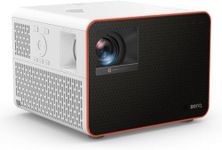
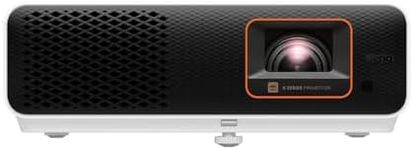

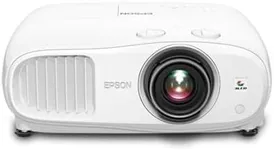

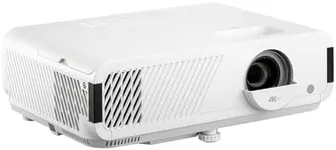
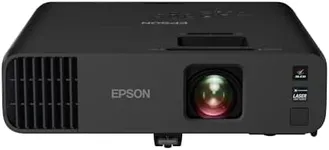
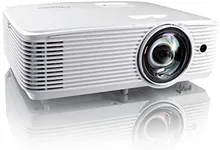

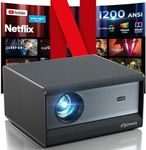

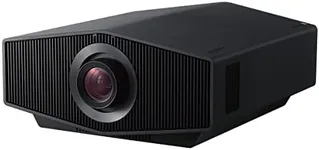

![[Netflix-Licensed/Dolby Audio]Outdoor-Projector 4K with Wifi 6 and Bluetooth,ONOAYO 800ANSI Native 1080P Portable Projector,Built-in Netflix/YouTube/PrimeVideo, Electric Focus Keystone Smart Projector](https://images-proxy.bestreviews.guide/YC8EM1GLOPUys6VdTUUNpoHRSMI=/0x150/https://m.media-amazon.com/images/I/416Pk09H5pL._AC_CX679_.jpg)
![[Netflix-Licensed/Dolby Audio]Outdoor Projector with Wifi 6 and Bluetooth, iSinbox 1080P Native 700ANSI Portable Movie Projector, Built-in Netflix/YouTube/PrimeVideo, Electric Focus Smart Projector](https://images-proxy.bestreviews.guide/Cte3qzCNs45sbxDyB3wFASbH6mI=/0x150/https://m.media-amazon.com/images/I/51b6wI1PMWL._AC_CX679_.jpg)
